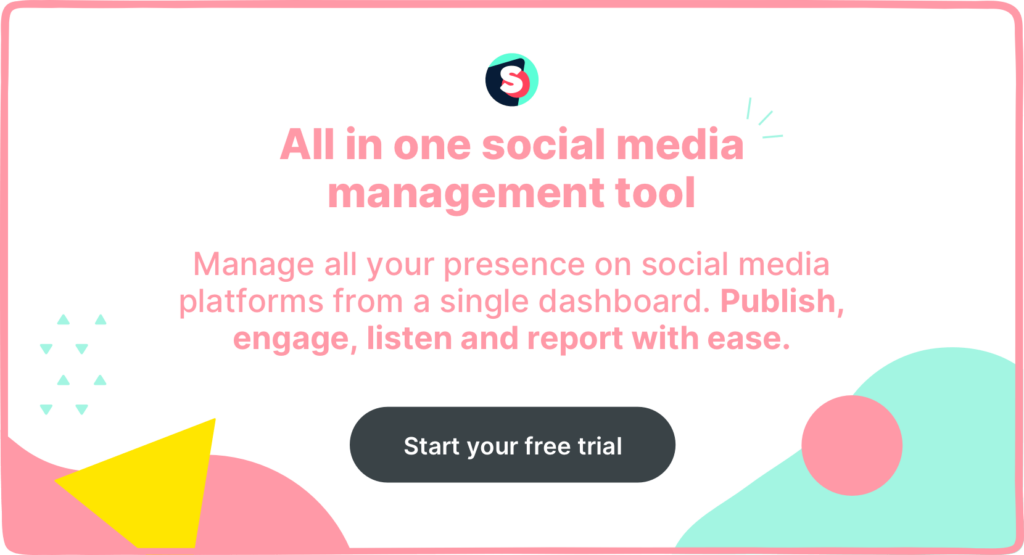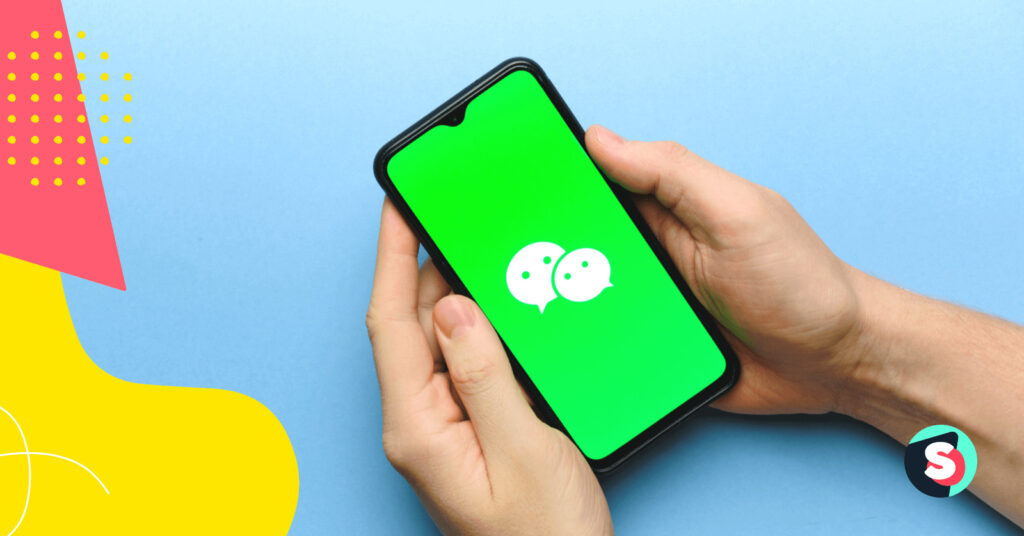Summarize this article via
Boasting over one billion active users worldwide, WeChat is one of the most-used social media messaging apps on the planet. And before you write it off as just another app for sharing memes with friends and family, you should know that it’s also a powerful marketing tool.
Not only can businesses use it to engage with customers, boost brand awareness, and drive sales, but it’s also an excellent tool for tapping into the largest online market on the planet. So yes, WeChat could be your brand’s secret weapon to reach your target audience in China.
This guide breaks down the whats, whys, and hows of WeChat, including:
What is WeChat, and how does it work?
Before we dive into how it can power your marketing efforts, let’s start with the basics: What is WeChat?
WeChat burst onto the scene back in 2011 when it was launched by Chinese tech leader Tencent. Since then, it has evolved from a simple messaging app to a fully-featured social media platform. A sort of one-stop-shop, if you will.
Bearing in mind that platforms such as Facebook are banned in China, WeChat filled a huge gap in the market and quickly became a key business and comms tool.
So, what does WeChat social media actually do?
A lot.
Here are the main features WeChat offers:
- Video and voice calling
- Social media messaging
- Picture messaging
- Location sharing
- Mini-games
- Story feature called “WeChat Moments.”
A standout feature of the app is “WeChat Out,” which allows users to call international landlines for a reduced rate. It also has a localization tool to translate messages and content into 20 languages.
It all sounds great, right? And it is. That said, there are some privacy concerns. For example, WeChat has no encryption, meaning third parties could potentially access messages.
While the app is free, signing up for WeChat is slightly more complicated than similar apps such as Whatsapp or Telegram.
How to sign up for WeChat
Another unique feature of WeChat is the signup process. However, it’s not as simple as creating a username and password; you’ll need someone with an account to verify you.
This person needs to be a current WeChat user in good standing on the app, and they must scan a QR code to verify you. Without someone to scan the code, you won’t be able to open an account.
If you’re lucky enough to have someone to verify you, here’s a step-by-step guide to signing up.
- Download WeChat from the Google Play or Apple App Store
- Tap “Sign Up” to create an account
- In the app, select “Sign up”
- You can choose to sign up with your Google account or Apple ID, Facebook account, or phone number
- Pick a username, avatar, and password
- Read through and agree to the Terms of Service by checking a box at the bottom of the screen
- Prove you’re not a robot by solving a short puzzle
- After solving the puzzle, a QR code will appear on-screen with instructions on how to get verified
- When the person has scanned the code to verify you and entered your phone number, your account will become active
Pro tip: Existing users can only verify one new user a month. So, make sure the person you choose to vouch for you hasn’t done this for someone else in the past 31 days.
Next on the agenda; how to use WeChat for business.
WeChat features for businesses
There’s more to WeChat than meets the eye. It boasts some pretty impressive features businesses can leverage to reach new markets, connect with existing audiences, and enhance the customer experience.
Intrigued?
We’ve rounded up eight of the best WeChat features for businesses.
Feature 1: WeChat Pay
The app comes with an in-built mobile payment solution called WeChat Pay. As such, it provides a secure and convenient way for businesses to accept customer payments directly in the app.
As a result, it streamlines and enhances the customer experience, leading to better loyalty and fewer abandoned carts.
On top of breaking down common payment barriers and improving the consumer experience, WeChat Pay gives businesses access to valuable customer data and analytics. These include demographic information, transaction history, and purchasing behaviors.
Thanks to this, companies can better understand their target audience’s preferences, needs, and behaviors and tailor their strategy accordingly.
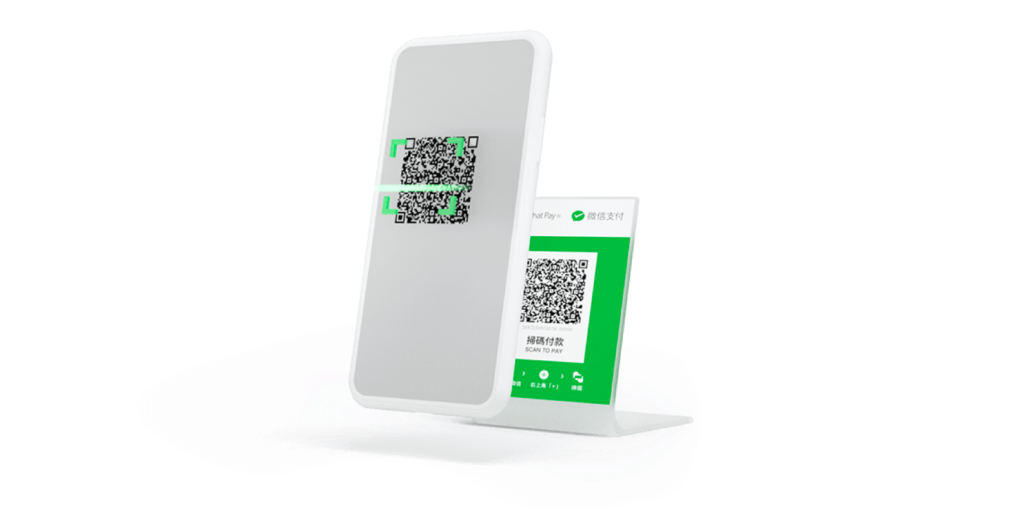
Feature 2: Official Accounts
With WeChat, businesses can make an official account and customize it with features like mini-programs, coupons, and surveys. These features drive engagement by creating a space to share news, promotions, and product updates.
At the same time, brands have the added advantage of receiving direct feedback from their customers via messaging and comments.
In addition, official accounts can set up an e-commerce store within WeChat, providing a streamlined shopping experience for customers. Since customers can buy products directly from official accounts, businesses see increased sales and revenue.
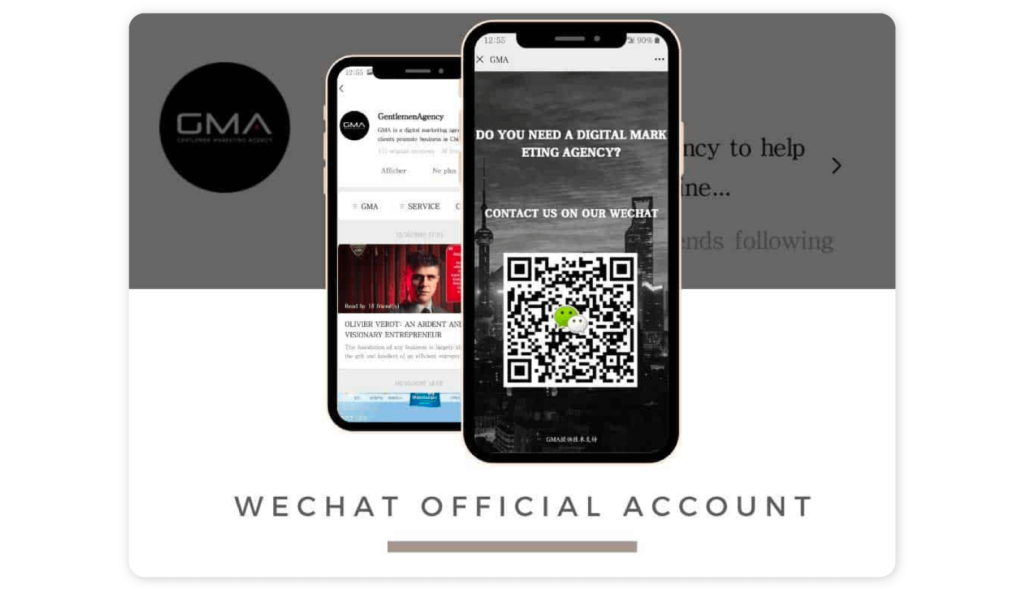
Feature 3: Customer Service
The built-in customer service platform is one of the most attractive WeChat for business features. With tools like automated chatbots, 24/7 support, and personalized messages, it’s an excellent way for businesses to support their customers.
And we don’t need to tell you the benefits of providing top-class customer service. From reduced churn rates to higher customer satisfaction and loyalty, it’s a pretty big deal.
Another plus of this feature is that it streamlines communication. As well as allowing you to address customer complaints, inquiries, and feedback quicker, it reduces the workload for busy customer service teams.
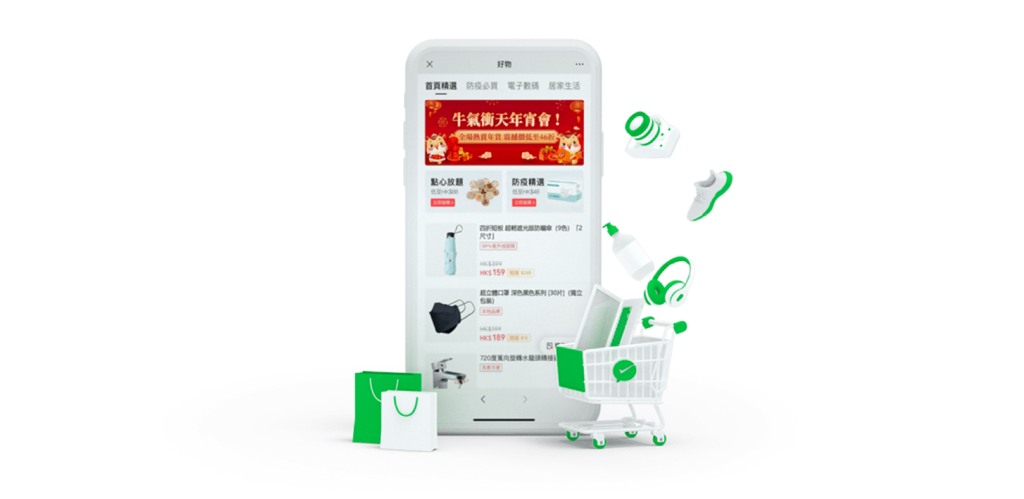
Feature 4: Mini Programs
Mini-programs are one of the most exciting WeChat features. These micro apps can be used for e-commerce, games, and carrying out tasks like ordering food, buying tickets, booking hotels, etc.
The beauty of mini-programs is that businesses can create their own to offer customers a seamless and convenient shopping experience. In turn, this boosts conversion rates and customer engagement.
Moreover, mini-programs reduce the need to build standalone mobile apps, helping businesses save on development costs.
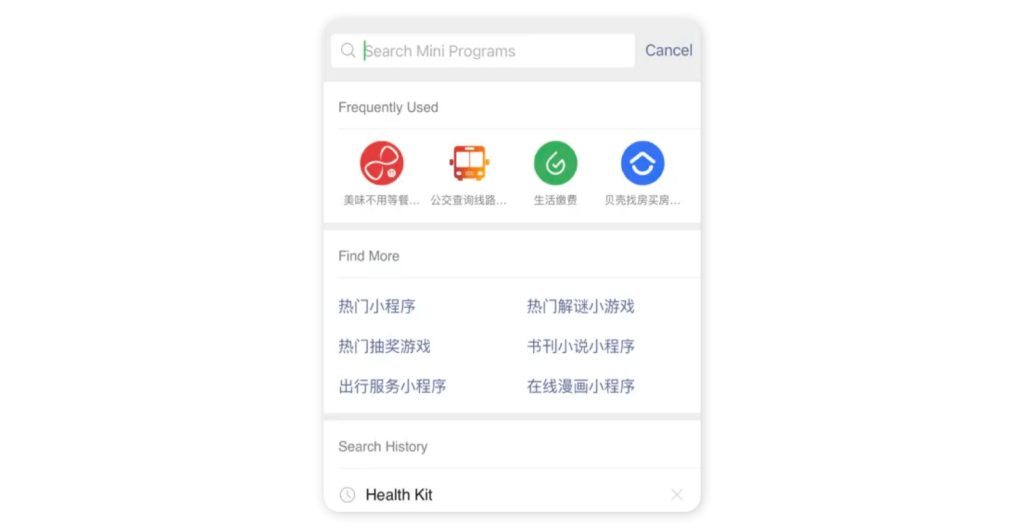
Feature 5: WeChat Moments
Similar to Instagram Stories, WeChat Moments is a social media feed for users to share pictures, videos, and updates. It’s also a great way for businesses to interact with their followers, promote their products and services, and build brand awareness.
Another plus is the robust targeting options, which allow businesses to reach audiences based on demographic, interests, and other user behaviors. This highly targeted advertising drives conversions and sales.
Feature 6: Advertising
There are currently several advertising options on the app, including official account ads, banner ads, and WeChat Moments ads. Each can target a specific audience to help businesses reach their ideal audience.
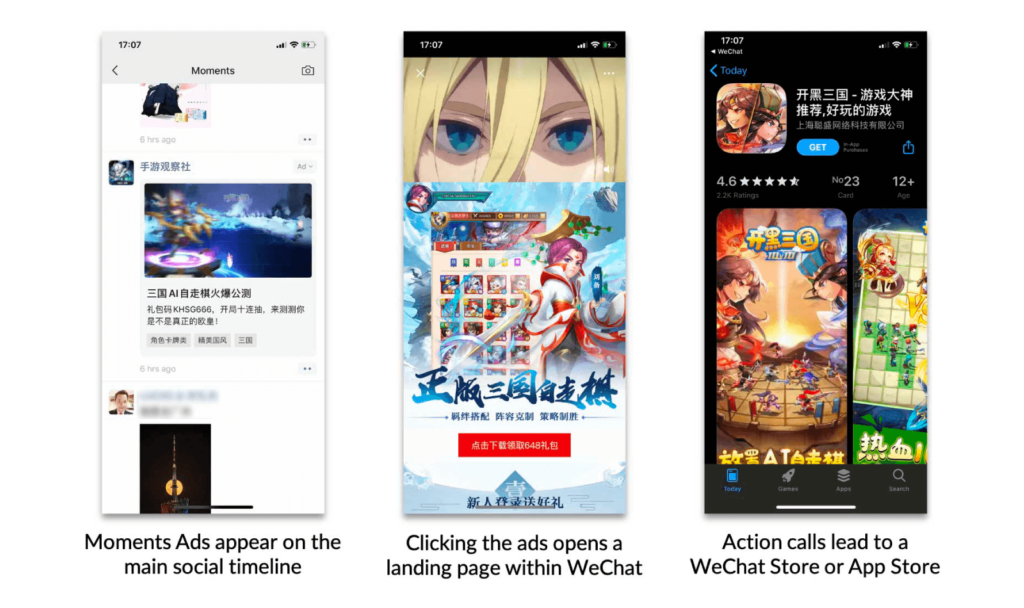
Feature 7: WeChat Groups
WeChat groups work similarly to WhatsApp, Telegram, or even Facebook groups. Users can join groups based on interests and location or start their own.
Groups are also an excellent way for businesses to engage with customers, share news and promotions, and get feedback.
Almost every leading e-commerce platform in China has a WeChat group for customers to ask for help or communicate any issues. They also create a space for users to offer each other support.
Whether to share news, offer customer service, or organize a meetup, WeChat groups allow businesses to communicate directly with customers in real-time.
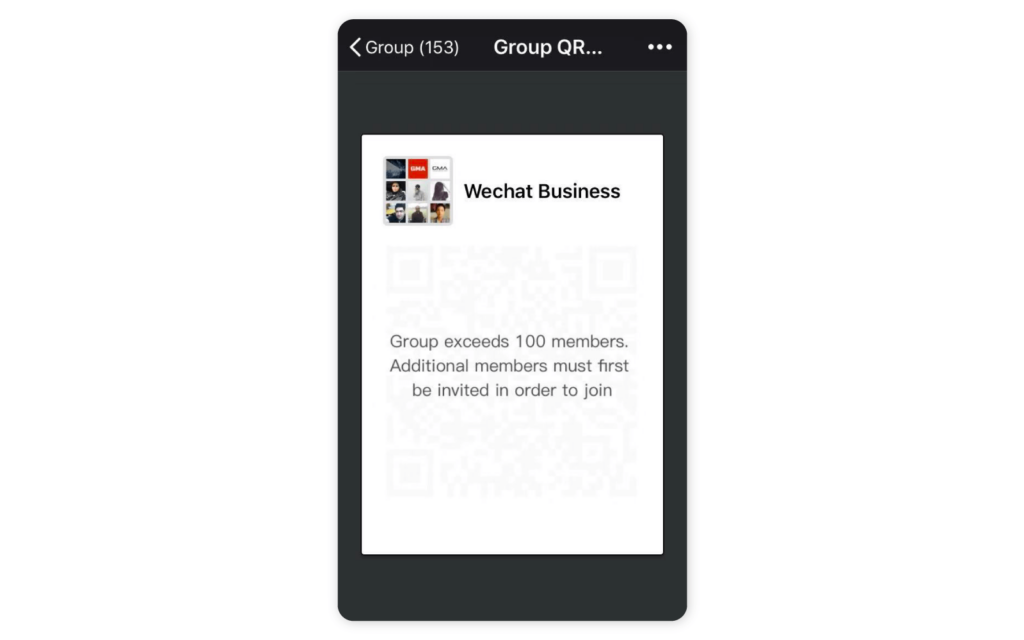
Feature 8: WeChat Store
Using the WeChat Store, businesses can create a storefront directly in the app. This means brands can sell their products and services directly to customers, accept payments, and manage orders.
As we’ve already seen, this creates a streamlined customer shopping process. The results? Better conversion rates, deeper insight into customer needs, and a host of powerful marketing tools at your fingertips.

Next up; we explore what WeChat marketing is.
What is WeChat marketing?
WeChat marketing uses the social media and messaging app to promote and advertise products or services to a target userbase.
Businesses can do this by running advertising campaigns on the app, promoting products and services on WeChat moments, and running mini-programs to drive conversions.
A solid WeChat marketing strategy is multi-faceted and designed to build brand awareness, increase customer loyalty, and drive sales.
What makes WeChat such an effective marketing tool? A large part of it is the sheer number of times its users engage. As shown below, the average WeChat user engages eleven times daily.
This gives businesses plenty of opportunities to engage with users and convert them into shoppers.
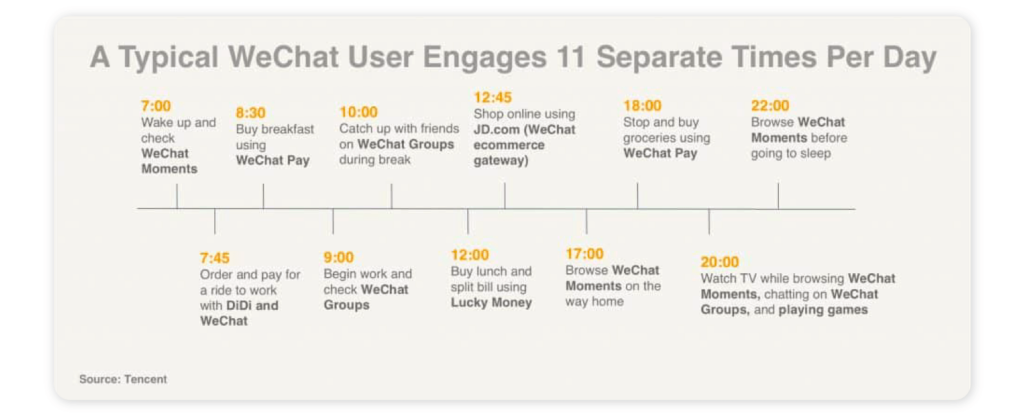
7 steps for creating a WeChat marketing strategy
A killer WeChat marketing strategy can drive results and foster long-term success on the app. And with such a large audience to tap into, there are more than a few incentives.
We’ve broken down how to create a WeChat marketing strategy in seven simple steps.
1. Define your goals
Start by identifying your main objectives–what do you want to achieve with your WeChat marketing strategy? Whether it’s generating new leads or driving brand awareness, the first step is to visualize what success will look like.
2. Identify your target audience
Next, you’ll need to define who your ideal audience is. Doing this will enable you to tailor marketing messages and adjust your tactics to reach and connect with this audience. At this stage, you should consider your user demographics, interests, and behavior patterns on the app.
Running a social media competitor analysis can help you garner deeper insight into your target demographic.
3. Plan your marketing tactics
Now you know who you’re targeting, it’s time to define the marketing tactics that will resonate with them and help you reach your goals. This should be directly related to WeChat—for instance, mini-programs, Moments ads, or official accounts.
4. Design a content strategy
Now it’s time to build a content strategy that aligns with your goals and target audience. First, think about the types of content that will engage, entertain, and inform your audience. Examples include videos, WeChat articles, and Moments. Try to include a variety of content types; this will keep followers engaged.
🎉 Bonus read: How to track and analyze your competitors’ content strategy
5. Set up a WeChat official account
Next, you’ll move out of the planning phase and set up your account. Don’t rush this step. Instead, invest time in creating a compelling profile and optimizing it for your target users. Take advantage of the customization features to create an on-brand profile and start posting content regularly.
Don’t forget to interact with users on WeChat; this will boost engagement rates and build brand awareness.
6. Launch your WeChat marketing campaign
Your account is up and running, you’ve gained some traction, and now it’s time to execute your plan. Closely monitor the campaign performance using WeChat analytics and tweak as needed. You’ll want to pay especially close attention to conversions and engagement metrics.
7. Measure the impact of your campaign
Take a long, hard look at your campaign. What worked well? What could be improved? Use what you’ve learned to refine your strategy for the next one, taking time to gather user feedback as well as studying analytics.
Try investing in social media listening tools like Sociality.io’s Listen module for deeper insights. Using this module, you can monitor and track your brand’s insights and benchmark them against your competitors.
📝 You may also be interested in: Top 6 social media competitor audit tools that are worth your time
Speaking of launching killer WeChat marketing campaigns, here’s a closer look at some success stories.
Examples of great Wechat marketing campaigns
There’s something to be said for standing on the shoulders of giants. So, we’ve rounded up six examples of brands that nailed their WeChat advertising campaign. Watch and learn.
1. Coca-Cola – “Share a Coke”
Coca-Cola’s advertising is iconic worldwide. From its Christmas ad to its logo, this brand knows a thing or two about marketing a product. So when it launched the “Share a Coke” campaign on WeChat, we paid attention.
As part of the campaign, customers could personalize a virtual Coca-Cola bottle with their name (or a loved one’s) and share it on Moments. Unsurprisingly, the campaign was a roaring success and saw over 125 million virtual Coke bottles shared on the app.
Why did it succeed?
The brand cleverly harnessed WeChat’s social features to create a personalized experience that tapped into emotional connections. As a result, it was shareable and effectively drove brand awareness.
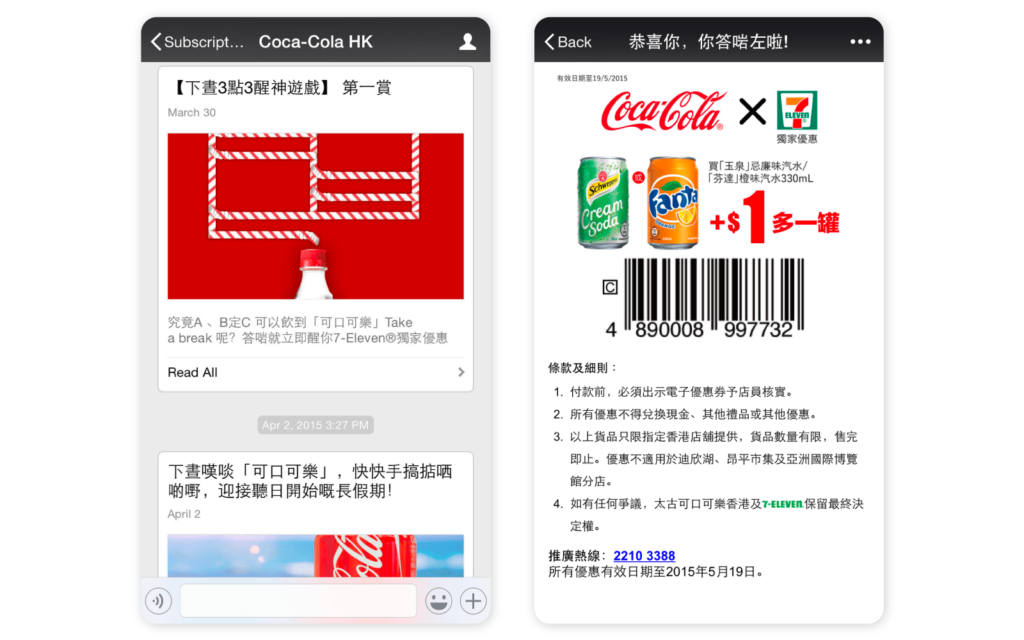
2. Durex – “Connect”
Condom brand Durex had a mission to educate Chinese customers on safe sex and promote its products at the same time. Due to the sensitive nature, this was a challenge.
However, Durex successfully tackled the issue by creating a campaign that included educational video content, quizzes, and branded WeChat stickers. Thanks to this multi-faceted approach, over 200,000 users took part in the quizzes, and the brand experienced increased brand awareness.
Why did it succeed?
Providing users with educational content, Durex was able to position itself as an authority brand that can be trusted. Moreover, using branded stickers aided in creating a campaign that was equal parts shareable and educational.
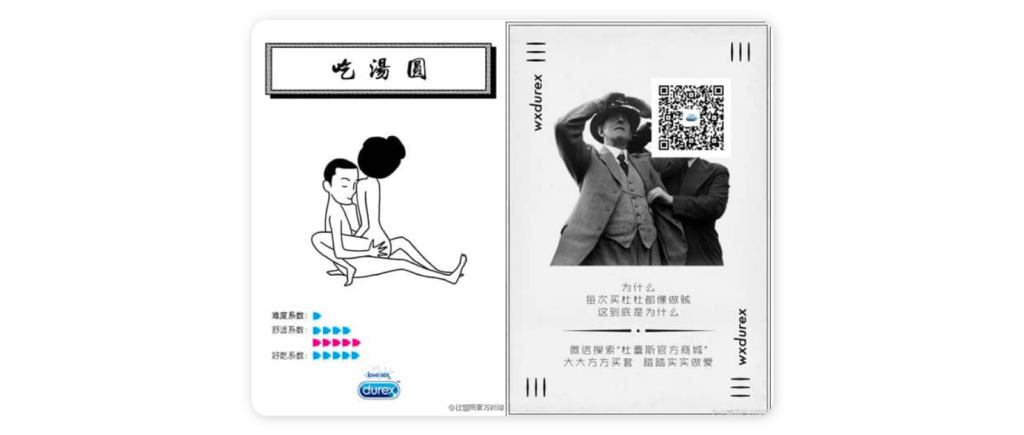
3. Nike – “Get More”
In a bid to promote its product and encourage users to run more often, the sportswear giant Nike launched a WeChat campaign. One of the most notable features of the campaign was a mini-program enabling users to track their running stats and compete with friends. As well as monitoring their data, the campaign included posts and videos featuring well-known Chinese personalities.
Over three million users participated in Nike’s campaign, boosting brand loyalty and sales.
Nike has launched a string of successful WeChat campaigns, including one that encouraged users to add the brand on WeChat, take a picture, and send it. Nike then suggested a running shoe that matched the picture. Finally, users could buy their customized shoe suggestions directly on WeChat.
Why did it succeed?
By using WeChat’s mini-programs feature, Nike was able to create a gamified experience. In addition, it tapped into its target audience’s passion for fitness (and competitive nature) and used local Chinese celebrities to make it more relatable.

4. Burberry – Valentine’s Day
In 2018, the luxury fashion brand Burberry launched a mini-program to celebrate Chinese Valentine’s Day (known as Qixi).
The mini-program encouraged users to play a game with their partners to discover what type of relationship they have. First, users answer a series of questions, such as “Which shirt would you prefer your partner to wear on a date?” (all Burberry shirts, naturally).
Users receive a relationship outcome based on their answers with titles including “the tale of Ice and Fire.”
That’s not all. The game unlocked access to shop Burberry’s latest collection, which included two new handbags exclusive to China. Context is important here. In 2018, May 20th became China’s unofficial second Valentine’s Day. According to romantic millennials, the number “520” (pronounced wǔ èr yī in Chinese) sounded similar to “I love you” (said wǒ ài nǐ). And so, a new romantic holiday was born, and luxury brands jumped on the occasion quickly. The moral of the story? Chinese audiences love love.
Why did it succeed?
Burberry’s campaign was personalized, shareable, and timely. It played on its customers’ love for limited-edition products and romance to generate urgency and drive sales.
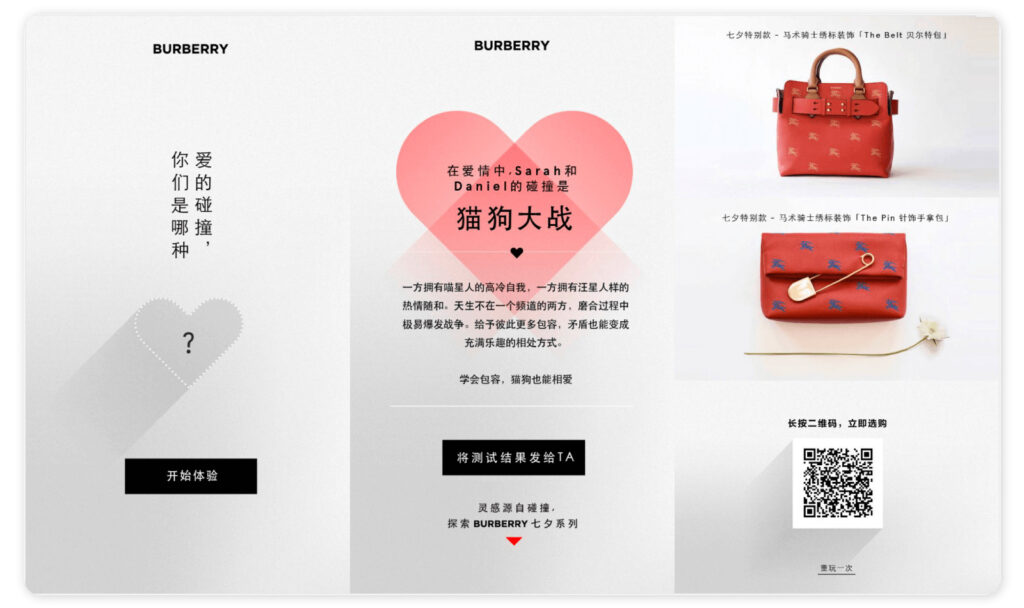
5. Air BnB – “Night At”
Airbnb caused quite a stir with its “Night At” campaign, which offered participants the chance to spend the night at a one-of-a-kind location. Experiences included a night at the iconic Great Wall of China or catchy some Zs on a basketball court. You can even spend a night in a coffin in the run-up to Halloween (yikes!).
Air BnB promoted the campaign with a series of WeChat Moment ads and used a mini-program to enable users to book their stays. A whopping half a million people joined the fun, rendering the campaign a triumph.
Why did it succeed?
There are several reasons why the “Night At” marketing campaign was such a hit. First off, it came up with a unique concept that appealed to Air BnB’s target audience–satisfying their thirst for adventure and off-the-beaten-track experiences.
Secondly, Air BnB cleverly encouraged users to share their photos and essays on WeChat. This created lots of high-quality user-generated content to spread awareness.
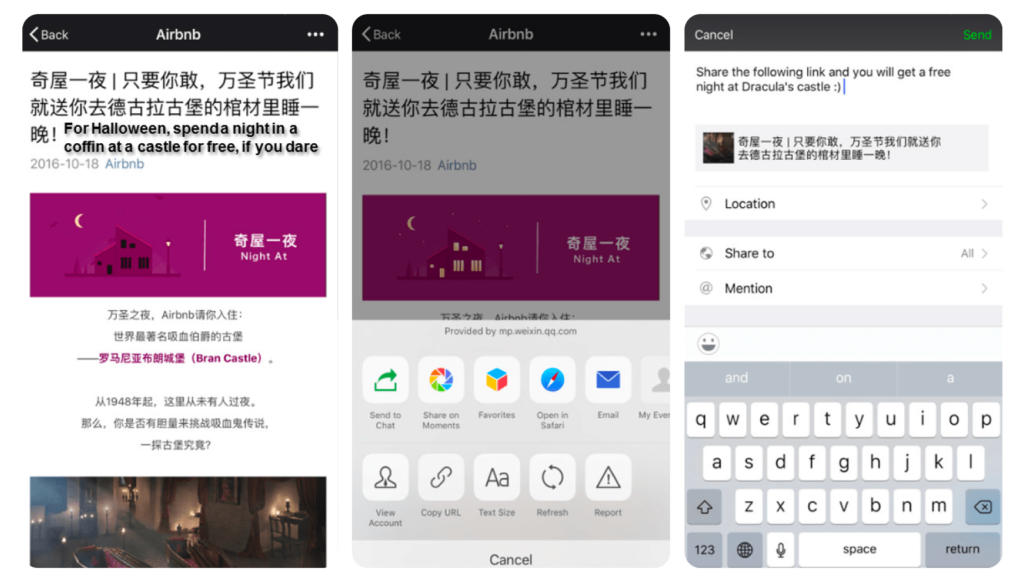
6. McDonald’s – “Lucky Bags”
If there’s one thing we’ve learned from these examples, it’s that people love limited-edition products. In 2017, McDonald’s excited its Chinese customers by launching the “Lucky Bags” campaign via WeChat. Users could buy a mystery bag of McDonald’s food and merch via WeChat Pay and pick it up at a local McDonald’s restaurant.
Why did it succeed?
McDonald’s took advantage of WeChat’s e-commerce and mobile payment features to create a campaign that was exciting, seamless, and convenient. What’s more, it encouraged users to share their Lucky Bags on WeChat moments to spread the word.
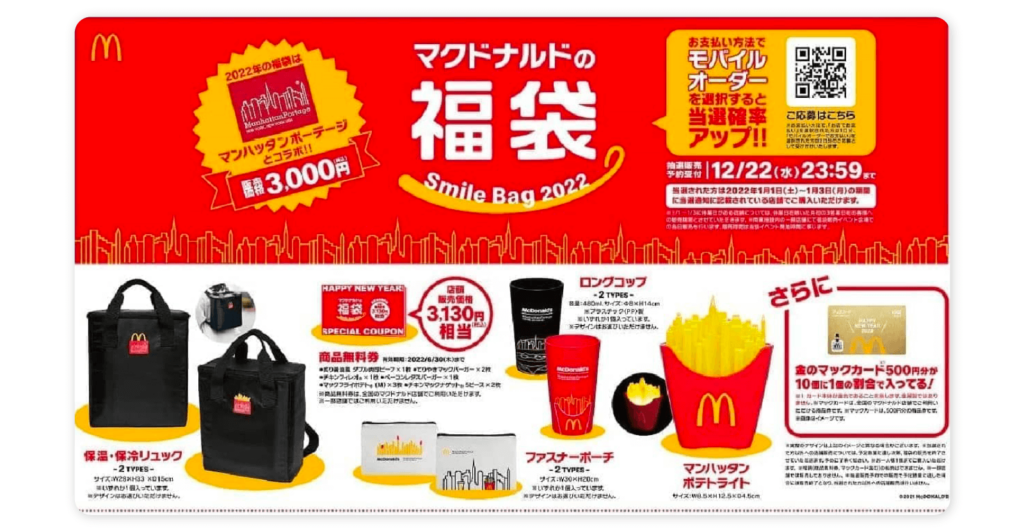
5 tips to market your business on WeChat
We’re rounding off this guide with five essential WeChat marketing tips to make your strategy successful.
1. Collaborate with Key Opinion Leaders (KOLs)
KOLs are WeChat’s version of influencers. They have a large following, making them perfect for collaborating with to increase your following and reach a specific audience. From sponsoring their posts to running joint campaigns, collaborating with KOLs is a surefire way to see quick results.
2. Personalize, personalize, personalize
Personalizing your messaging on WeChat is one of the best ways to foster a strong relationship with your followers. Thanks to WeChat’s advanced targeting and segmentation tools, businesses can easily send personalized messages to their users based on demographics and behaviors.
Starbucks is a fantastic example of this. It delivers tailored messaging to its customers, depending on their order history, location, and preferences.
3. Take advantage of social commerce
One of the best features of WeChat business is the ability to integrate social media and e-commerce. Big brands like Sephora are already using social commerce to create a streamlined and seamless shopping experience. For instance, Sephora has a WeChat mini-program that enables users to browse, buy, and share product reviews all within the app. They can also receive tailored product recommendations for a truly personalized experience.
4. Create compelling content
If you plan on using WeChat for business, you’ll need to create top-class content that engages your followers. Take a look at some of the leading brands on WeChat, and you’ll see that they use a variety of content formats to entertain, educate, and engage users. These can include quizzes, videos, and interactive games.
Coca-Cola’s “Catch the Coke” game is a great example; users had to catch virtual Coke bottles to win prizes.
Burberry is another brand that’s slaying the WeChat content game.
Its 2019 “Burberry Mini Program” created an immersive user experience, combining AR filters, games, and access to exclusive content. The campaign launched in the run-up to Chinese New Year to promote its Lunar New Year Collection.
A standout in the campaign was the mini-game “Ratberry Run” (inspired by the Year of the Rat). Users had to direct the rat to collect Burberry items while avoiding obstacles. Then, they could share their scores and compete with their friends to win prizes.
Another exciting addition was the use of AR filters that allowed users to try on virtual products and share the snaps on their socials. They could also customize their images with themed stickers and greeting messages to send to their loved ones for the Lunar New Year.
Followers on WeChat also had access to exclusive behind-the-scenes content of the Lunar New Year campaign shoot, including interviews with the design team.
Despite some criticism for not fully understanding the holiday’s cultural significance, Burberry’s campaign content was a huge hit overall.
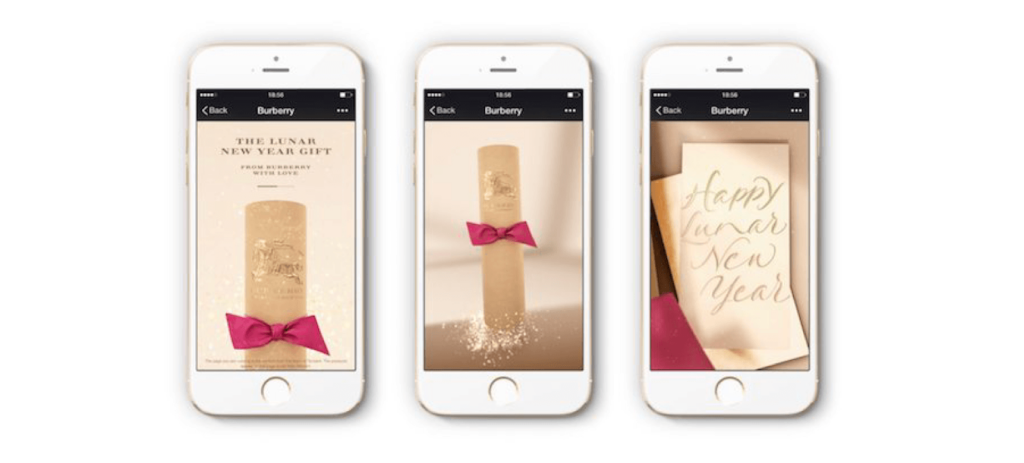
5. Encourage User Generated Content (UGC)
UGC is an integral part of any successful social media marketing strategy. Traditional ads just don’t resonate well with today’s users, especially Gen Z. Instead, they respond better to authentic, raw content generated by users.
Dior cleverly encouraged UGC in its WeChat marketing efforts, creating a contest to invite users to share their own Dior-inspired content.
Called the “Dior Love Chain,” the campaign was centered around spreading love and kindness. Dior asked WeChat users to share their stories of love and kindness along with the hashtag #DiorLoveChain. Then, it asked users to tag their friends to keep the chain going.
Dior created a mini-program so participants could upload their content and customize it with Dior-themed filters and stickers. It also offered big prizes for the best submissions, including Dior product gift sets and tickets for a Dior fashion show in Paris. The campaign received over eight hundred thousand submissions, reaching over three hundred and sixty million WeChat users.
A final word on WeChat for business
A rich array of features and a well-established presence makes WeChat a powerful marketing tool, especially for brands looking to tap into Chinese markets. From gaming to e-commerce, it’s much more than just a social media messaging app. That’s precisely why some of the world’s biggest brands are already leveraging it for advertising campaigns.
When used correctly, WeChat has the potential to drive sales, build brand awareness, and connect with your audience. Plus, its powerful analytics offer deep insight into your target demographic.
Need a social media marketing tool that can save your life (well, your workload, at the very least)? Grab a free trial of Sociality.io today and see how you can streamline your social media management workflows.
